Ship shape: nautical modernism takes to the trees in a Highgate house
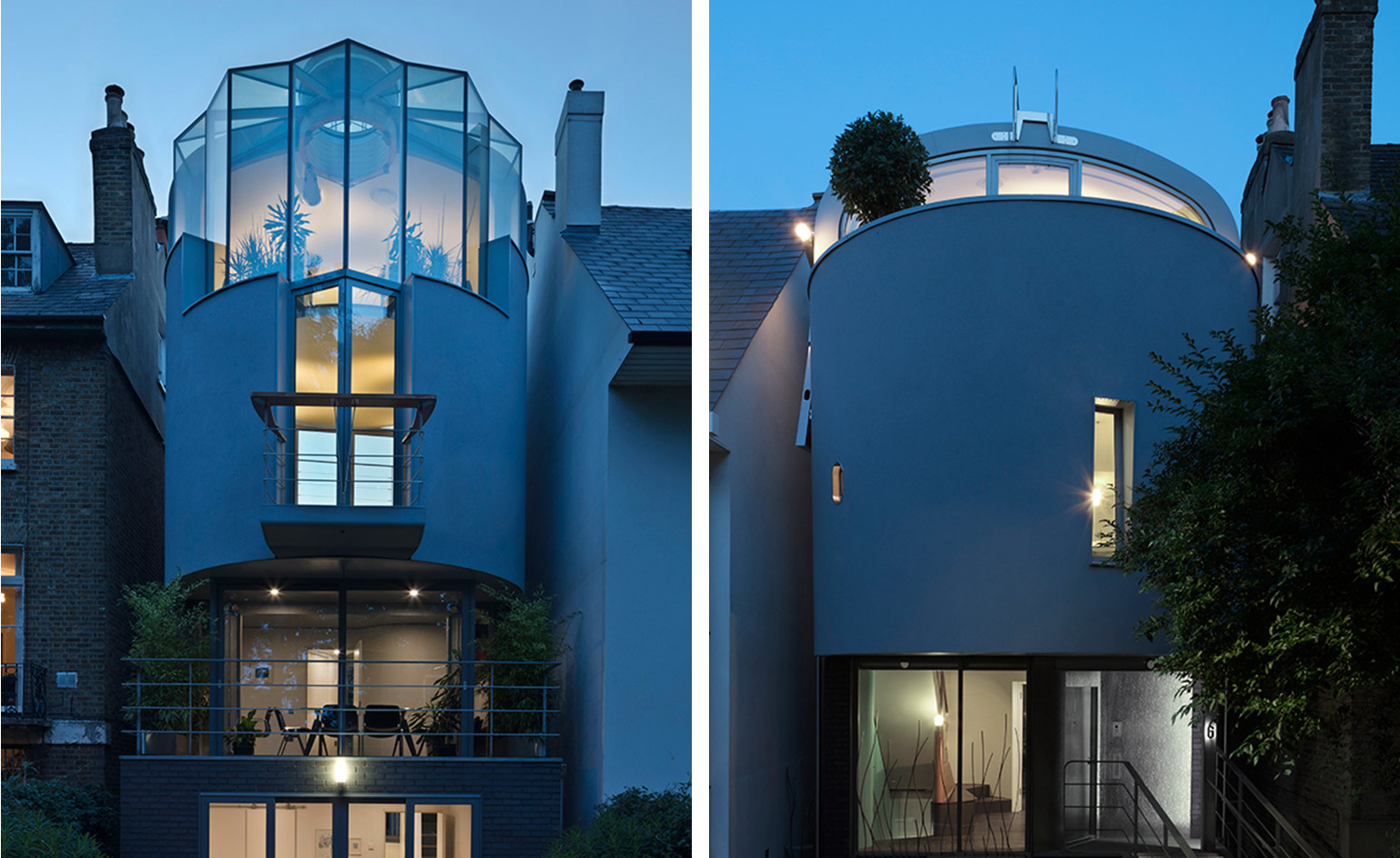
In the conservation area of north London’s leafy Highgate, a glass egg can be seen high up in the canopy. The egg is an indoor conservatory that perches upon a vessel, which is balanced on a brick base. This layered architectural structure is 6 Wood Lane, the eccentric location for Wallpaper’s October fashion shoot (W*223), where a platter of denim – with pieces by Tommy Jeans, G-Star Raw, Levi’s and Diesel Black Gold – was served up among the transparent room’s hanging succulents, and photographed by Ivan Ruberto.
Completed in 2012, 6 Wood Lane was designed as a home for Mike Russum, who was both client and – with the Birds Portchmouth Russum Architects practice, of which he is a director – the project’s architect. Russum describes the upper volume as a ‘vessel’ because of its aerodynamic and nautical references.
Russum initially wanted to build the conservatory out of aluminium, but it turned out to be more efficient to use boat-building technology. Thus, the vessel was made of bent plywood ribs with a rendered exterior. Russum describes the base of the structure as a ‘sardine tin, cut down the middle’, which forms a platform onto which the walls – like ‘giant hockey sticks that join at the roof’ – were secured. Pre-fabricated in giant panels off-site in Lincolnshire, it was crane-lifted into place, onto an in-filled concrete brick base cut into the hillside. You can imagine how surreal the house looks on a quiet Highgate lane.
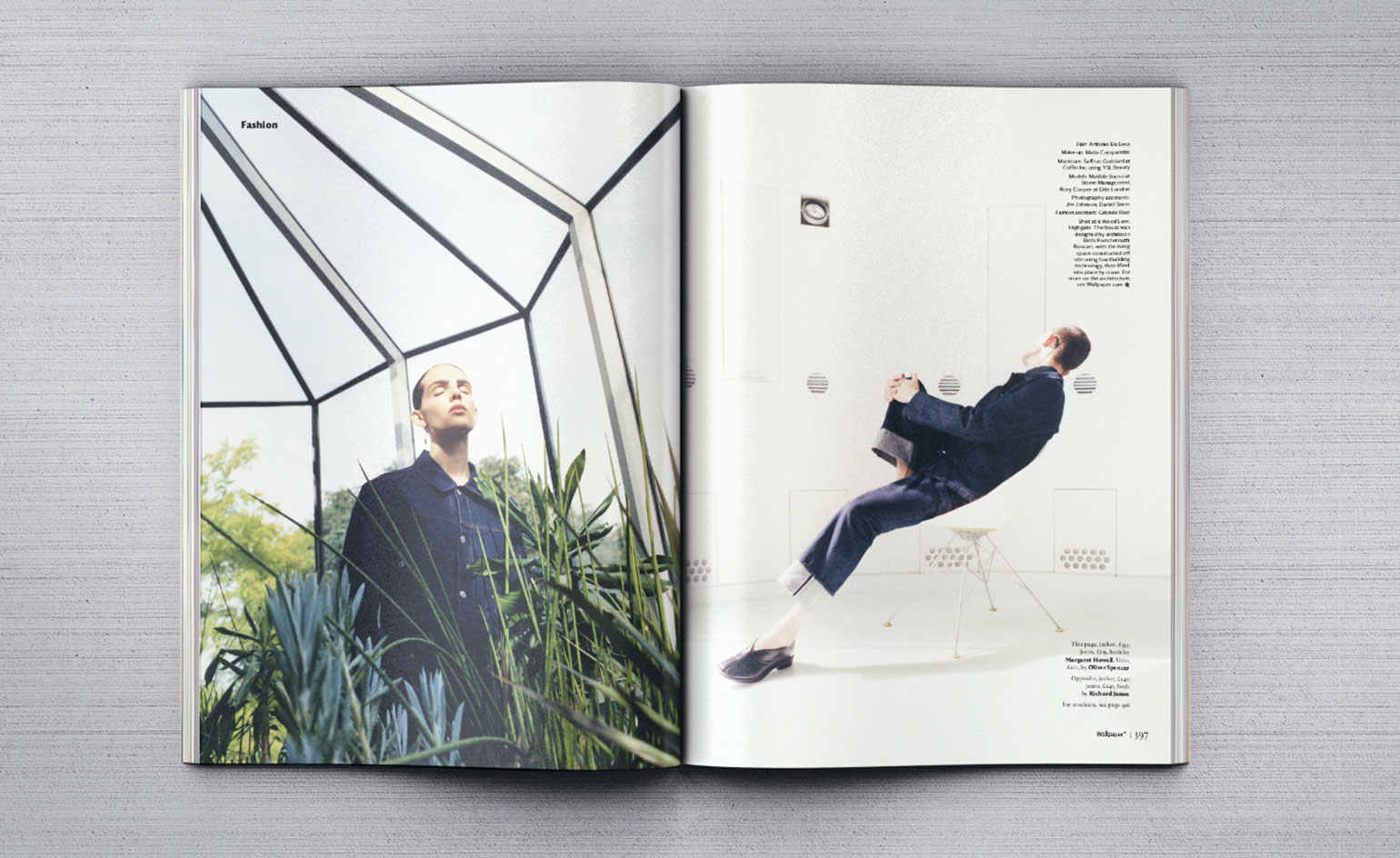
Our October 2017 denim shoot was shot on location at 6 Wood Lane. Fashion: Jason Hughes
The architects inverted the floorplan of the narrow, four-storey house to maximise on sunlight and space for the open-plan kitchen, dining and living area, which sits in the upper floor of the ovular vessel. The impressive double-height space sees light flooding in from roof windows, balcony doors at the bow and of course the crystalline egg, which sits above a floating mezzanine level. The lower floors contain the more conventionally shaped bedrooms – where the master room opens up to the verdant garden. Russum sees the house as a journey, leading guests from the aluminium entrance ramp into a curved galley corridor and wooden stairway, that gradually winds up into the conservatory helm of the ship.
He describes how the house brings multiple architectural influences together: ‘It’s about the entrance promenade, an overhang [and] column-free space – which are some of the core principles of the modern movement.’ He also credits the practice of architect James Stirling, who worked with geometric and mechanistic forms, as an influence. And while he admits to enjoying an ‘exuberent’ architecture, he is also resolute on the method and theory behind the work. ‘Our work isn’t a stage set,’ he says. ‘It's about having a stage that is three-dimensional and how things interact with each other – everything is wrought and worked.’
The interiors, also designed by Birds Portchmouth Russum Architects, are ship-shape and hard-working – durable resin rolled floors conceal under-floor heating, while neat in-built storage hides wine racks and shelves for books, keeping the deck clear for relaxing and entertaining. The furniture is all bespoke and the smooth, tough material Richlite is ubiquitous across the house, from the kitchen surfaces to the curved breakfast bench. Sourced in Canada, the material was chosen for its strength and seamless joins.

The entrance way, with in-built seating and storage
Above the breakfast bench, two slanted windows hint at the complex architectural structure beneath. ‘They lean, they aren’t vertical,’ Russum says of the windows, ‘but that’s because of all the pointed ribs – it’s a gorgeous implication of the strategy.’
At the top of the house, in the floating conservatory with yellow and blue surfaces and leafy shrubs climbing out of planters, Russum’s interior designer partner crafts her carved wooden sculptures and the architect sits with a drink at the end of the day, to soak up the warmth of the sun.
‘I always liked the idea of it being an elevated conservatory, partly inspired by James Stirling, who had this fantastic house in Belsize Park with a conservatory – the Victorians did it too,’ says Russum. ‘A lot of the time the glass almost melts away. When you have the planting in front and planting beyond, you do feel like you’re in the plant canopy.’
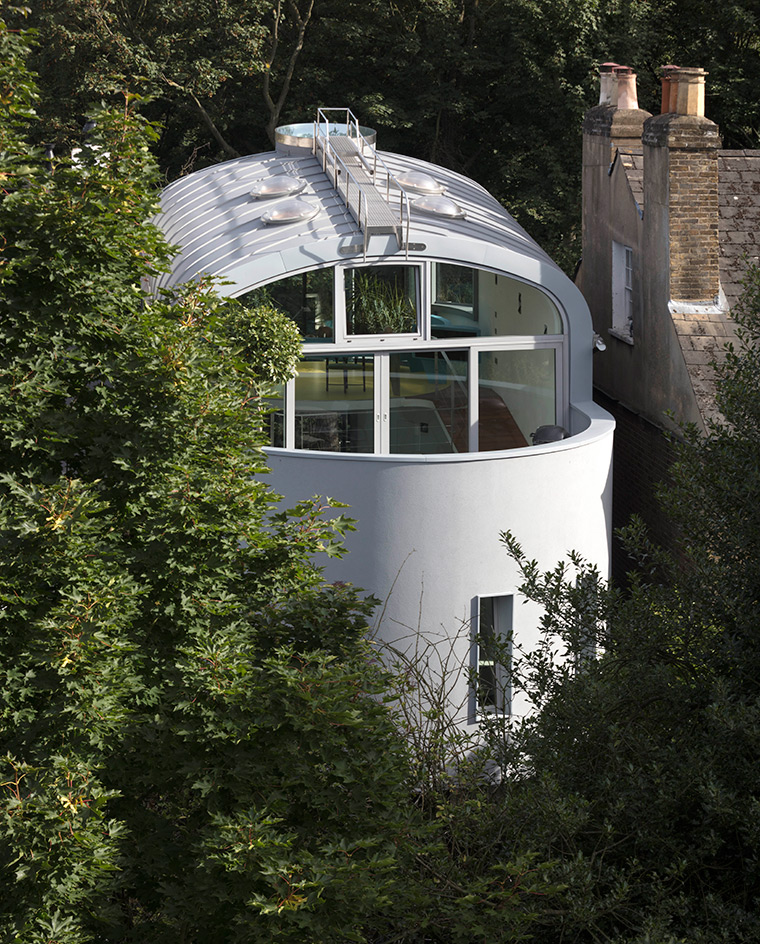
The street-facing upper floor terrace, as seen through the Highgate conservation area’s leafy canopy
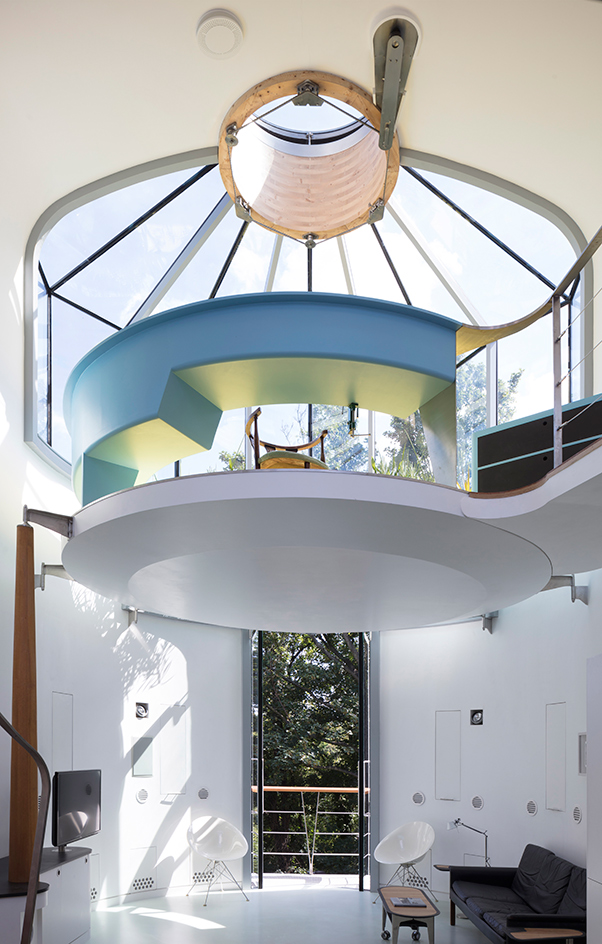
The floating conservatory at the top of the house and the open-plan living space below
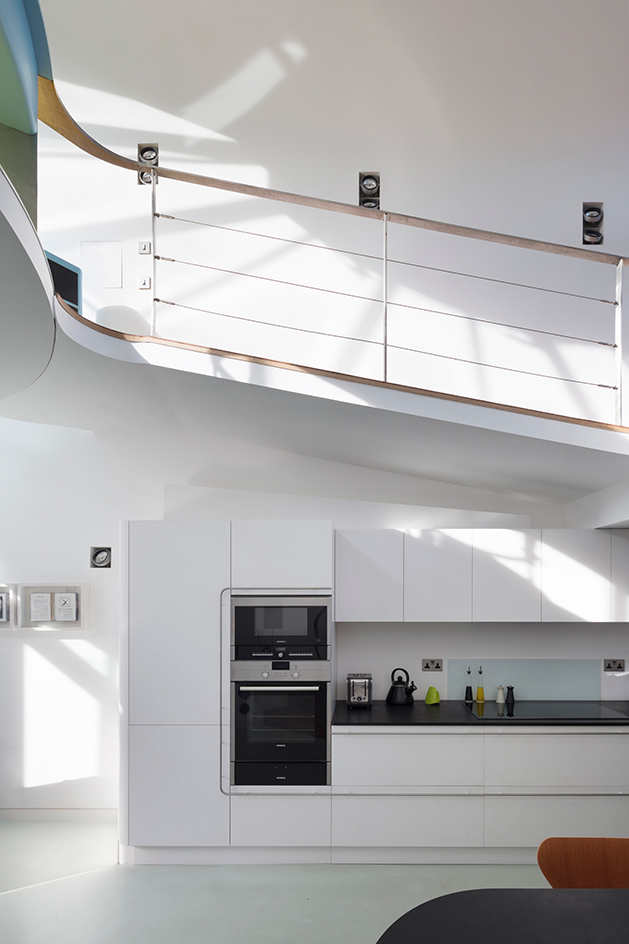
The kitchen and sloping galley leading up to the terrace balcony and the floating conservatory
INFORMATION
For more information, visit the Birds Portchmouth Russum Architects website
Receive our daily digest of inspiration, escapism and design stories from around the world direct to your inbox.
Harriet Thorpe is a writer, journalist and editor covering architecture, design and culture, with particular interest in sustainability, 20th-century architecture and community. After studying History of Art at the School of Oriental and African Studies (SOAS) and Journalism at City University in London, she developed her interest in architecture working at Wallpaper* magazine and today contributes to Wallpaper*, The World of Interiors and Icon magazine, amongst other titles. She is author of The Sustainable City (2022, Hoxton Mini Press), a book about sustainable architecture in London, and the Modern Cambridge Map (2023, Blue Crow Media), a map of 20th-century architecture in Cambridge, the city where she grew up.
-
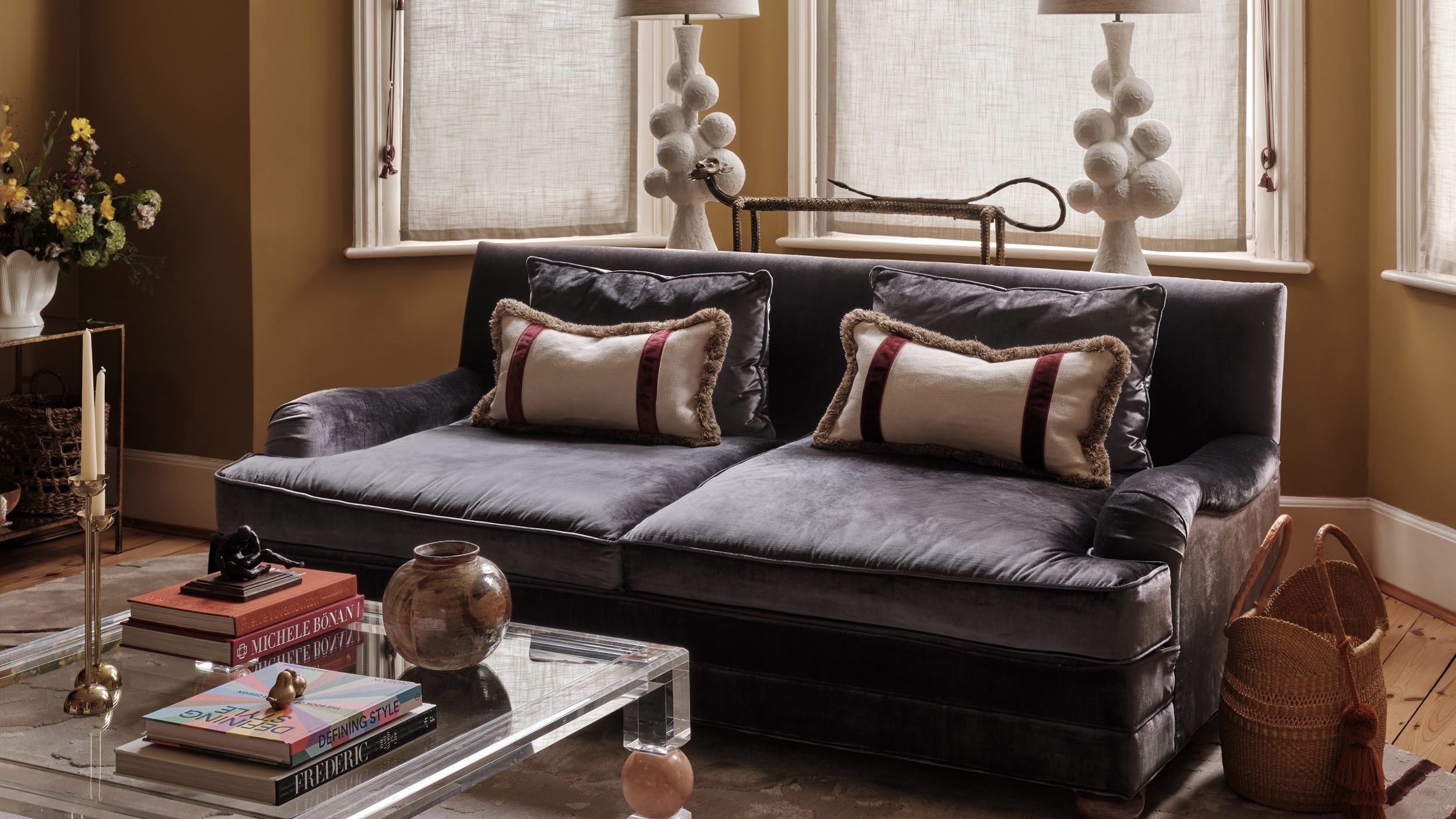 How to elevate a rental with minimal interventions? Charu Gandhi has nailed it with her London home
How to elevate a rental with minimal interventions? Charu Gandhi has nailed it with her London homeFocus on key spaces, work with inherited details, and go big on colour and texture, says Gandhi, an interior designer set on beautifying her tired rental
-
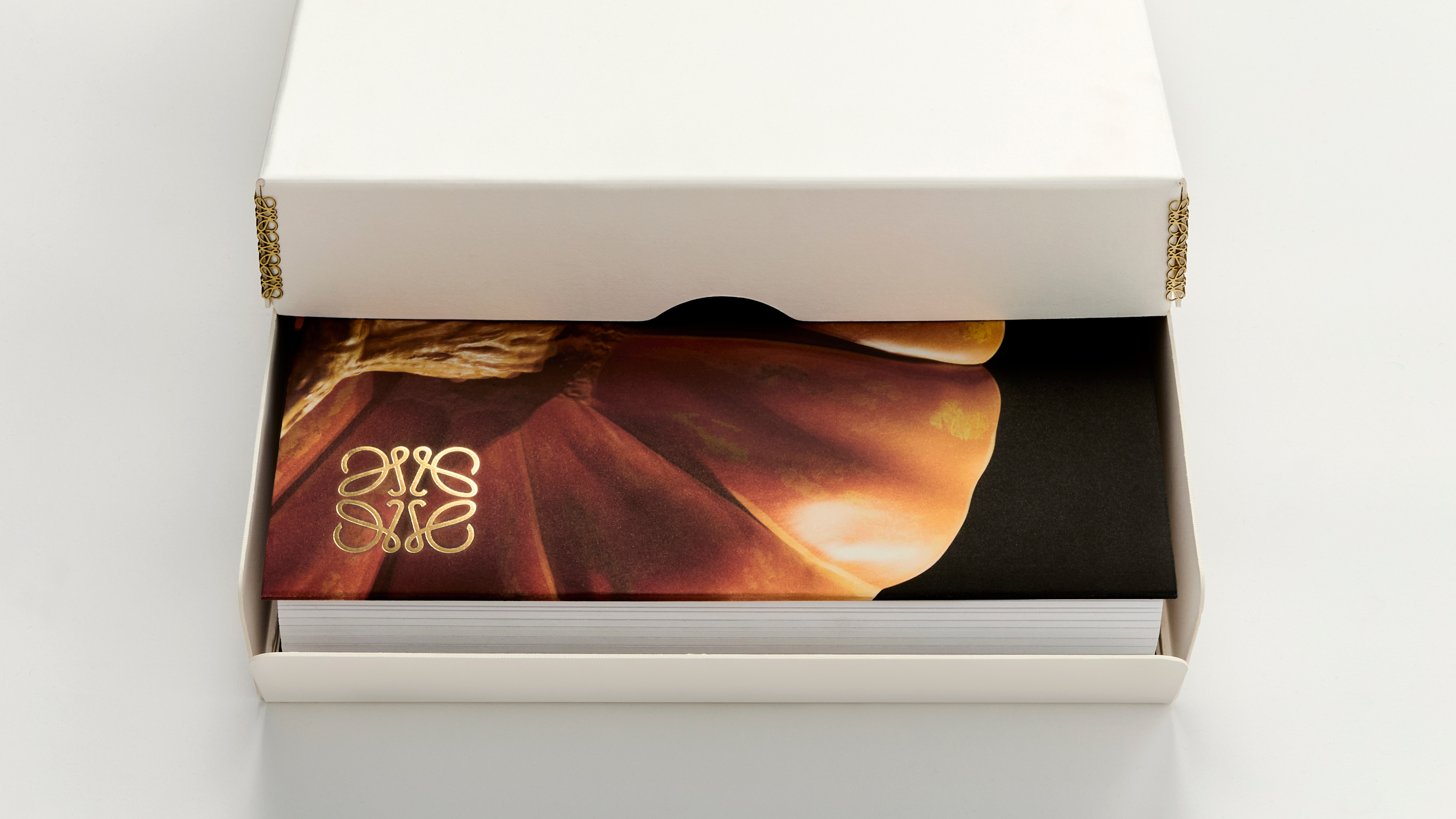 These fashion books, all released in 2025, are the perfect gift for style fans
These fashion books, all released in 2025, are the perfect gift for style fansChosen by the Wallpaper* style editors to inspire, intrigue and delight, these visually enticing tomes for your fashion library span from lush surveys on Loewe and Louis Vuitton to the rebellious style of Rick Owens and Jean Paul Gaultier
-
 Out of office: The Wallpaper* editors’ picks of the week
Out of office: The Wallpaper* editors’ picks of the weekFar from slowing down for the festive season, the Wallpaper* team is in full swing, hopping from events to openings this week. Sometimes work can feel like play – and we also had time for some festive cocktails and cinematic releases
-
 A former agricultural building is transformed into a minimal rural home by Bindloss Dawes
A former agricultural building is transformed into a minimal rural home by Bindloss DawesZero-carbon design meets adaptive re-use in the Tractor Shed, a stripped-back house in a country village by Somerset architects Bindloss Dawes
-
 RIBA House of the Year 2025 is a ‘rare mixture of sensitivity and boldness’
RIBA House of the Year 2025 is a ‘rare mixture of sensitivity and boldness’Topping the list of seven shortlisted homes, Izat Arundell’s Hebridean self-build – named Caochan na Creige – is announced as the RIBA House of the Year 2025
-
 In addition to brutalist buildings, Alison Smithson designed some of the most creative Christmas cards we've seen
In addition to brutalist buildings, Alison Smithson designed some of the most creative Christmas cards we've seenThe architect’s collection of season’s greetings is on show at the Roca London Gallery, just in time for the holidays
-
 In South Wales, a remote coastal farmhouse flaunts its modern revamp, primed for hosting
In South Wales, a remote coastal farmhouse flaunts its modern revamp, primed for hostingA farmhouse perched on the Gower Peninsula, Delfyd Farm reveals its ground-floor refresh by architecture studio Rural Office, which created a cosy home with breathtaking views
-
 A revived public space in Aberdeen is named Scotland’s building of the year
A revived public space in Aberdeen is named Scotland’s building of the yearAberdeen's Union Terrace Gardens by Stallan-Brand Architecture + Design and LDA Design wins the 2025 Andrew Doolan Best Building in Scotland Award
-
 The Architecture Edit: Wallpaper’s houses of the month
The Architecture Edit: Wallpaper’s houses of the monthFrom wineries-turned-music studios to fire-resistant holiday homes, these are the properties that have most impressed the Wallpaper* editors this month
-
 A refreshed 1950s apartment in East London allows for moments of discovery
A refreshed 1950s apartment in East London allows for moments of discoveryWith this 1950s apartment redesign, London-based architects Studio Naama wanted to create a residence which reflects the fun and individual nature of the clients
-
 In this Cotswolds home, drama meets minimalism
In this Cotswolds home, drama meets minimalismCotswolds home Hiaven house, with interiors designed by McLaren Excell, is a perfect blend of contemporary chic and calm, countryside drama